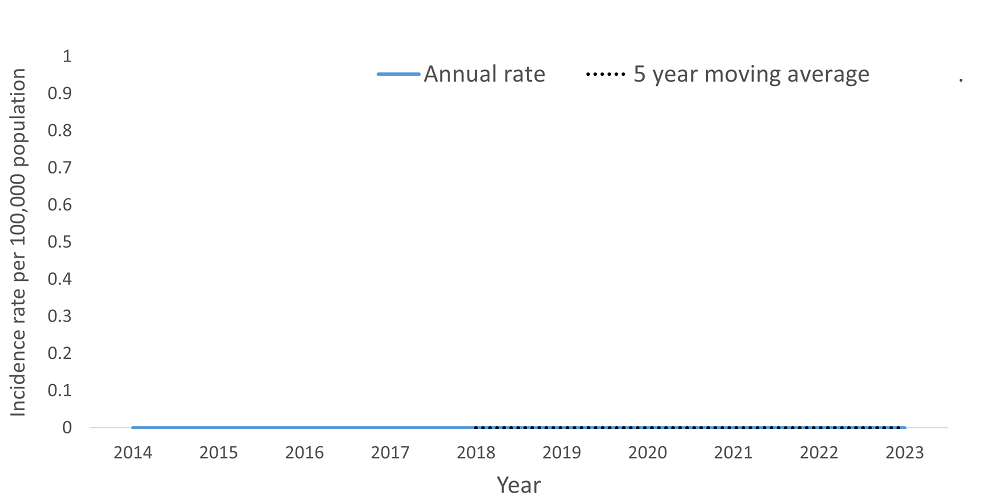Leprosy is a bacterial infection caused by Mycobacterium leprae. In Ontario, a very small number of imported cases occur per year. Although it is not fully understood how leprosy spreads, it is thought to be through frequent close contact with untreated infected persons. Leprosy affects skin, nerves, and mucous membranes (moist, inner lining of some organs and body cavities, such as the nose, mouth, lungs, and stomach) and is treated with antibiotics. Untreated cases may result in severe nerve damage, including paralysis of the hands and feet.
Local Information
2024 Statistics
Incidence rate is the number of new cases of disease divided by the number of persons at risk for the disease during a particular time period.
Cases:
0*
*Includes confirmed cases in 2024.
Incidence rate per 100,000 in 2024: 0
Incidence rate per 100,000 of Leprosy by year

Data Sources |
|
More Information about Leprosy |
Reporting |
|
Report to the Health Unit by next business day by phone at 705-474-1400 or toll free at 1-800-563-2808, ext. 5229 if leprosy is suspected or confirmed as per Ontario Regulation 135/18 and amendments under the Health Protection and Promotion Act, R.S.O., c.H.7. |
Should one go to childcare, school, or work if they have leprosy? |
|
Contact the Health Unit. Exclusion is needed until appropriate treatment has been started. No restrictions in employment or attendance at school are indicated for persons whose disease is regarded as non-infectious. Follow the direction of your healthcare provider, public health case manager, or occupational health at your workplace. |
Healthcare Provider Information |
|
Public Health Ontario: Leprosy (Hansen's Disease) Public Health Ontario: Mycobacterium leprae - PCR Infectious Disease Protocol, Appendix 1: Leprosy Central Forms Repository Form 3 - Notification of New Active - Leprosy (Hansen's Disease)
|
Contact our Communicable Disease Control (CDC) program at 705-474-1400 or toll free at 1-800-563-2808, ext. 5229, or by email to cdc@healthunit.ca for more information.
Last updated: February 2025, by CDC


